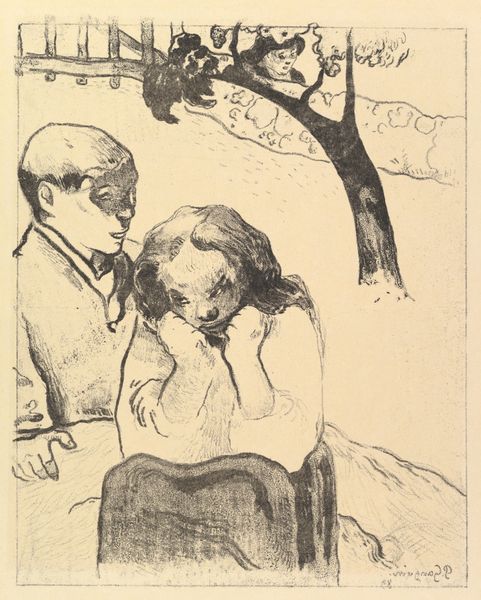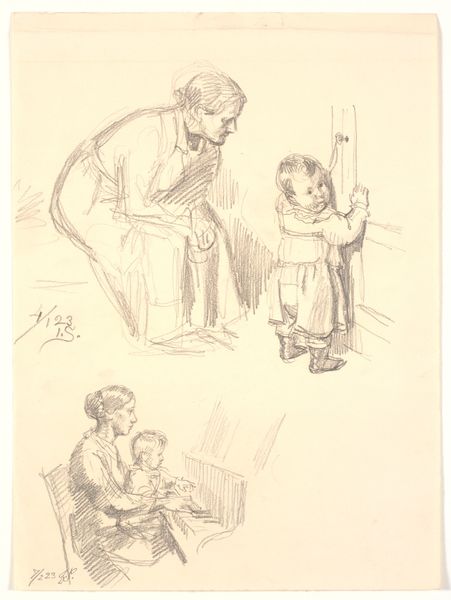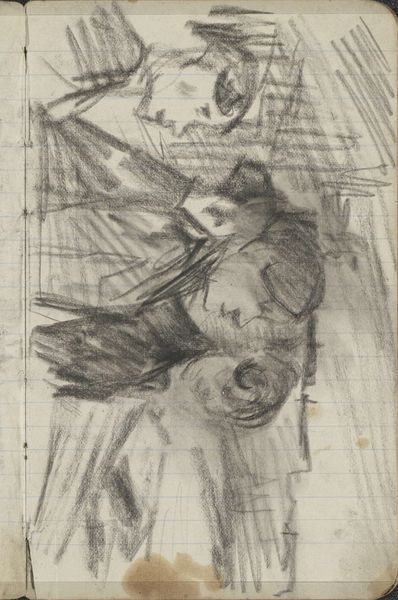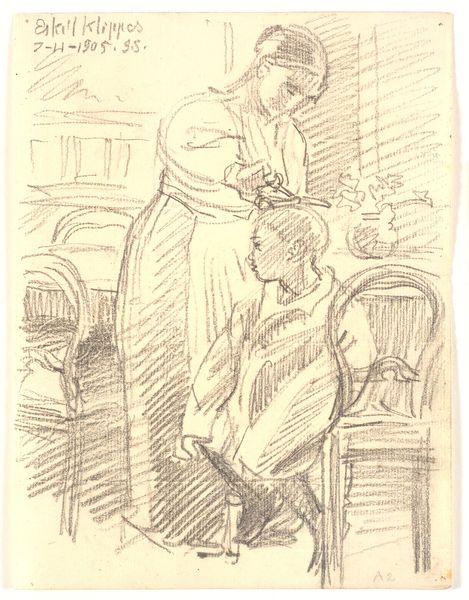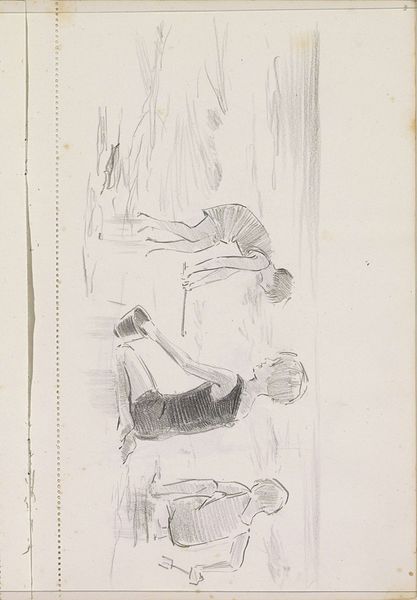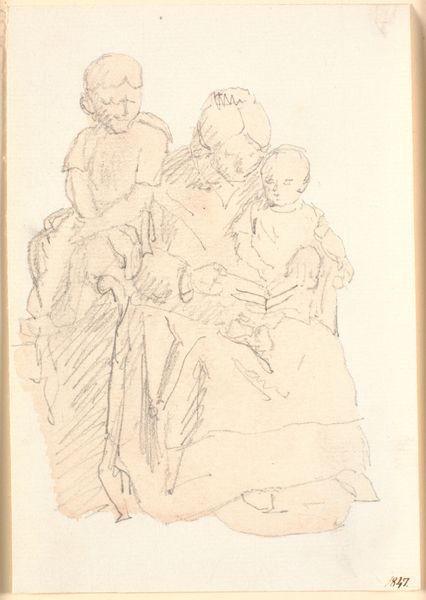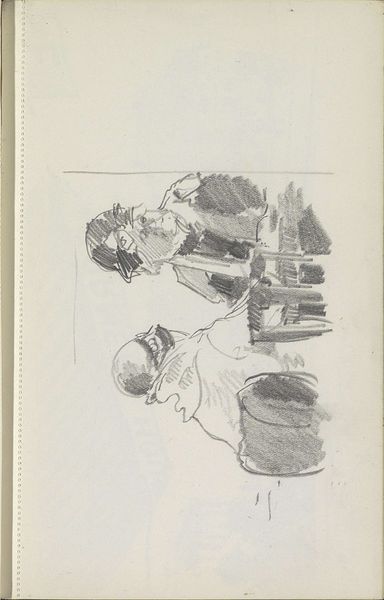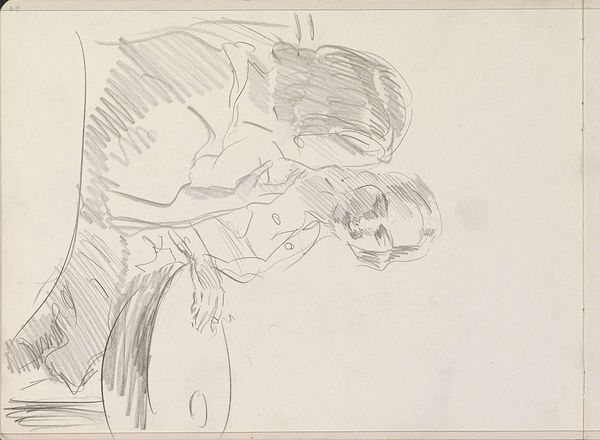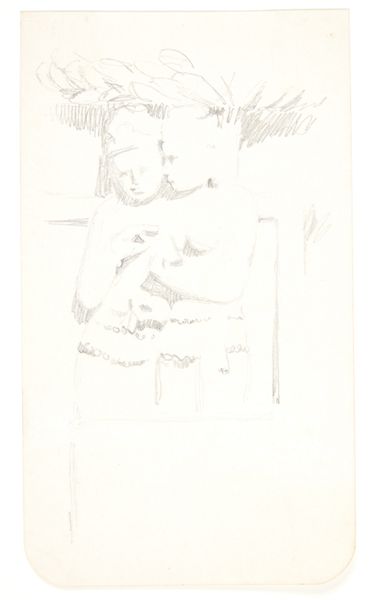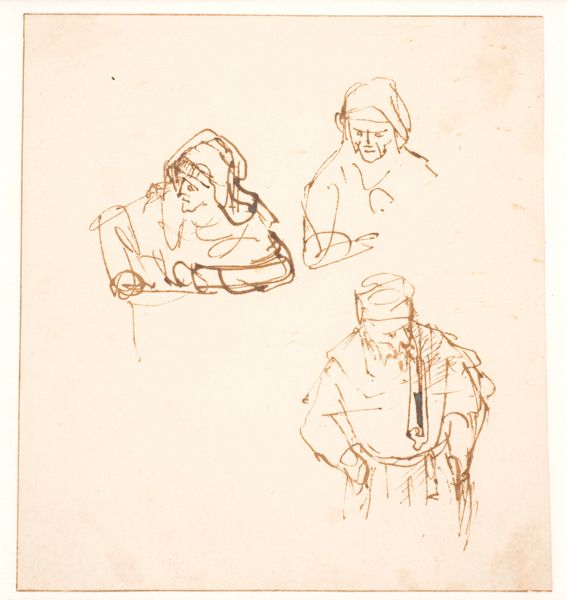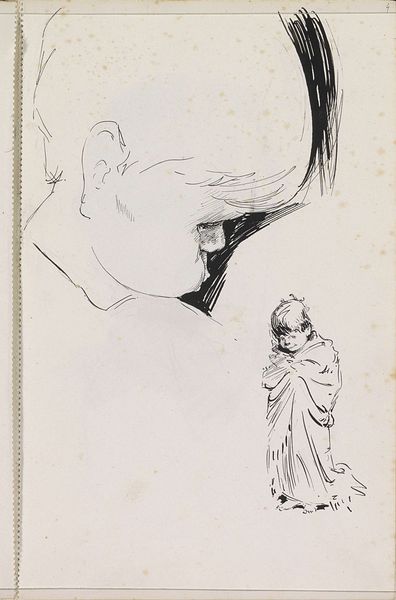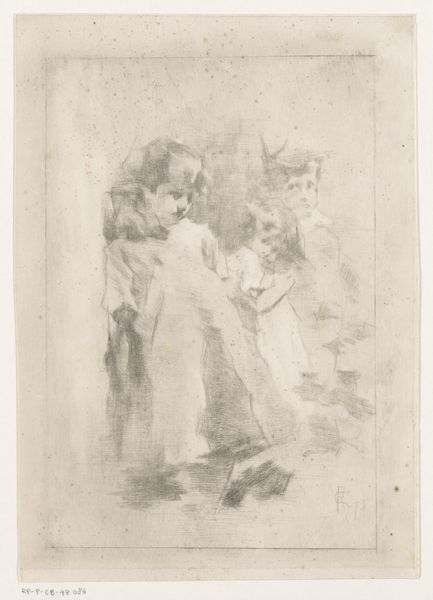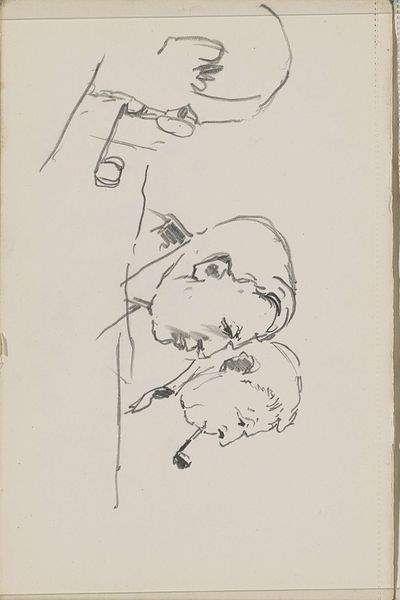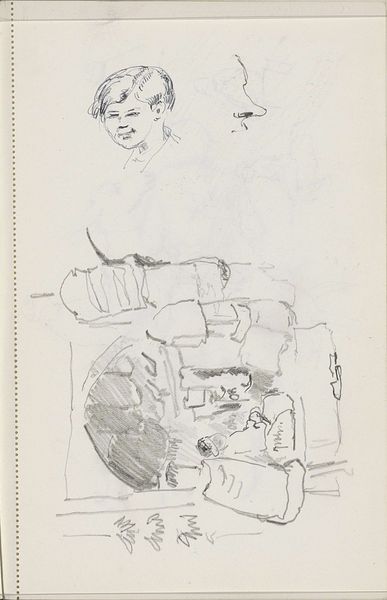
Human Misery, from the Volpini Suite: Dessins lithographiques 1889
0:00
0:00
drawing, lithograph, print, paper
#
portrait
#
drawing
#
ink painting
#
lithograph
# print
#
figuration
#
paper
#
line
#
symbolism
#
post-impressionism
#
monochrome
Dimensions: Image: 11 1/16 × 9 in. (28.1 × 22.9 cm) Sheet: 19 × 13 3/8 in. (48.3 × 33.9 cm)
Copyright: Public Domain
Paul Gauguin made this lithograph, “Human Misery,” as part of his Volpini Suite. It presents a snapshot of childhood grief, rendered with a deliberate roughness that challenges academic artistic norms. Created in France, this image emerges from a period of intense social and artistic upheaval. Gauguin, disillusioned with bourgeois society, sought authenticity in the “primitive,” both in subject matter and style. Here, the somber tones and stark lines evoke a raw emotional state. The setting, though vague, hints at a life untouched by urban artifice, aligning with Gauguin's broader critique of European modernity. The Volpini Suite, displayed at the Café des Arts during the 1889 Exposition Universelle in Paris, was Gauguin’s attempt to challenge the established art institutions of his time. To fully understand this work, it's helpful to consider Gauguin’s biography, the cultural milieu of late 19th-century France, and exhibition histories. Art history helps us see how personal expression intersects with broader social and institutional contexts.
Comments
No comments
Be the first to comment and join the conversation on the ultimate creative platform.
